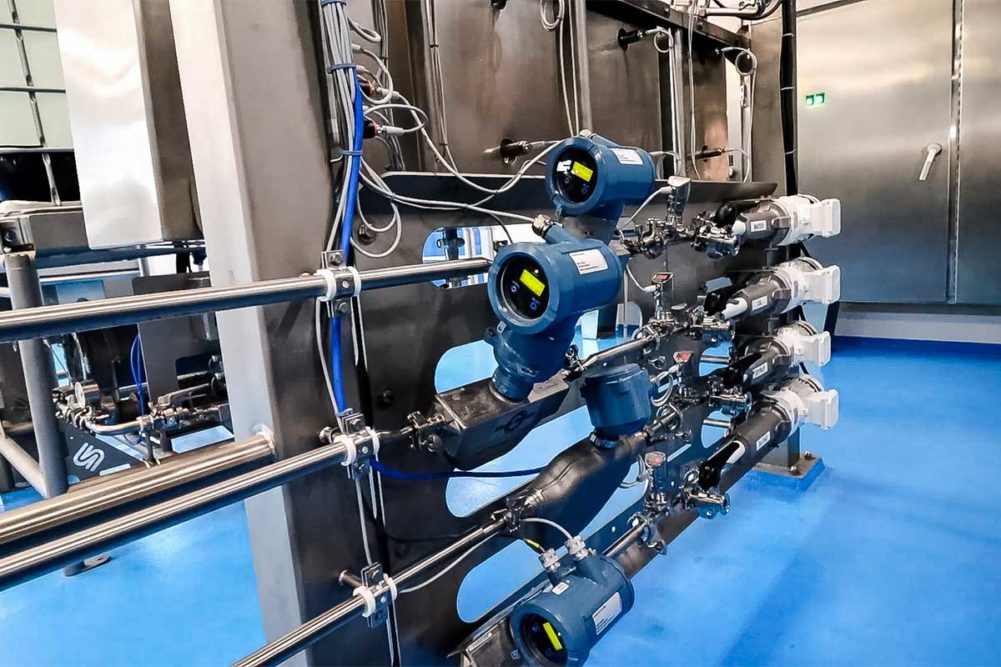Perhaps one of the biggest challenges involves gaining remote access to a bakery’s operation, especially with recent heightened concern over malware, ransomware and other high-profile hacking issues.
“Cyber security is a critical part of any company’s IT infrastructure,” said Josh Lamkins, controls engineering manager, Shick Esteve. “As a silver lining to the pandemic and the stay-at-home orders, many of our customers have implemented improved security measures and tools that allow for their employees to work remotely. With these security measures in place, customers have been more comfortable granting remote access to third-party vendors to provide remote support and service. An additional result is an increased use of remote sharing software to provide a solution to what used to be in-person meetings.”
Many companies, however, prefer to keep a firewall for their security.
“This is generally a protection that is well-respected, and so it is up to each company how they want to implement their remote system services,” explained Darren Adams, vice president of engineering, The Fred D. Pfening Co. “There are heightened security packages and techniques that permit safe remote service systems. We often have a login permission process required each time it’s requested that we log in, so that there is a very safe way of managing it. A server manager permits access and then concludes the session, making sure traffic is closely managed. All said, we have seen a steady annual increase in the use of these remote systems, given the increased flexibility it offers.”
Joe Lewis, marketing, Sterling Systems & Controls, noted that many bakeries permitted greater remote access as companies restricted visits by anyone but essential personnel who worked on the production floor.
“In the pre-pandemic past, IT managers were almost paranoid and hyper protective about allowing remote access to their network systems,” he explained. “The pandemic forced senior management to move IT toward managing remote access rather than preventing, eliminating and restricting it. Now remote 24/7 support can be provided to baking and food processors with ingredient batching systems by the manufacturer with wired or wireless Internet access connection to the batching system controls.”
In addition to troubleshooting, a connection through a secure VPN or remote desktop application allows bakeries to work with vendors to optimize an ingredient handling system’s performance, noted Jack Kilbride, vice president systems and automation engineering, Zeppelin Systems USA.
“This can be accomplished in a safe manner with vendor professionals working with your IT and engineering and maintenance staffs,” he said. “There are also products from vendors that specialize in security software that monitors the system, looking for threats to the control system.”
Louis Schwartz, business unit manager for ingredient handling systems, Gemini Bakery Equipment/KB Systems, pointed out that industrial VPN routers now offer robust security features, including two-factor authentication and connection audit trails, which is a log of every connection made to the router. A bakery’s IT department can also physically lock and prevent remote access to a piece of equipment either with a key switch or HMI button.
In many cases, Kevin Pecha, sales manager, AZO Food, said VPN systems tied to the process controller can reduce a bakery’s downtime that often comes from waiting for an outside programmer or technician to visit the plant to resolve a simple issue.
Other companies, however, only enable remote access after a problem occurs.
“The introduction of the use of VPN provides a sense of security, but others continue to maintain a more stringent stance and physically disconnect the VPN cable until an issue or need arises that requires external connectivity, at which time, it is a simple plug-in of the connection, and the system is available to an outside user,” he noted.
Tom Leach, national sales manager, pneumatic conveying systems, Camcorp, a member of the Scheuch Group, urged bakers to provide proper ongoing training to ensure that operation and maintenance personnel know the system intimately.
“Oftentimes overlooked — as another unwarranted expense in capital budgets — is investing in vendor training for the personnel who will interact with the system,” he said. “This training will go a long way in reducing troubleshooting time and related downtime expenses.”
Understanding the original design parameters for the system’s controls can also help when trying to diagnose why an operation isn’t performing up to par.
“Over time, people may have made slight changes thinking that it might improve the operation,” explained Buddy Nash, field service and technical service manager, Shick Esteve. “A combination of those slight changes can result in reduced transfer rates. Optimal balance between air and material ratios can be counterintuitive to equipment operation in other parts of the bakery.”
To maximize their performance, ingredient handling systems require a combination of old-fashioned preventative maintenance along with the latest in digital detection to monitor consistency, ensure product quality and enhance production efficiencies.
This article is an excerpt from the August 2021 issue of Baking & Snack. To read the entire feature on Ingredient Handling, click here.





